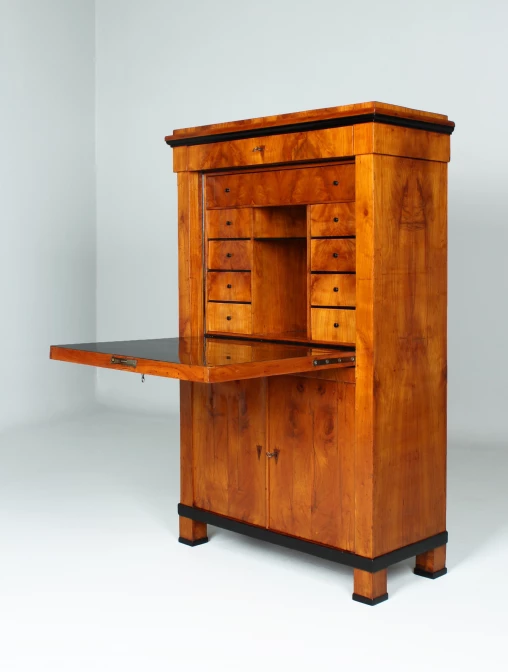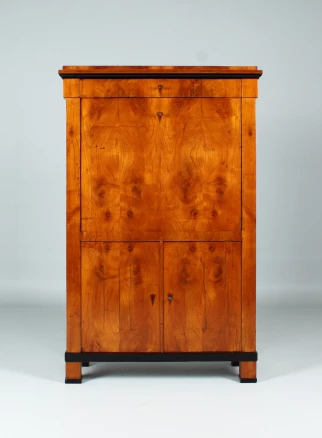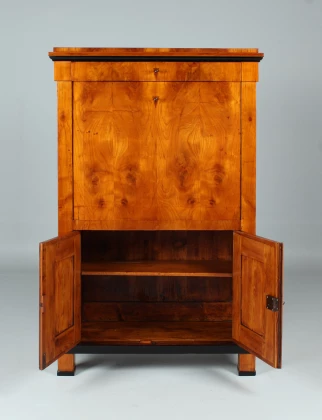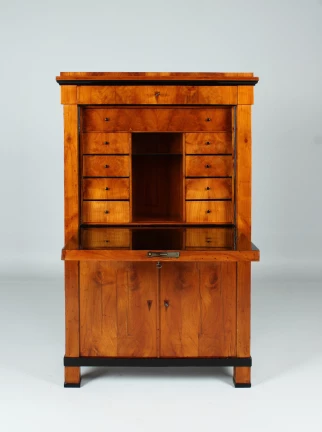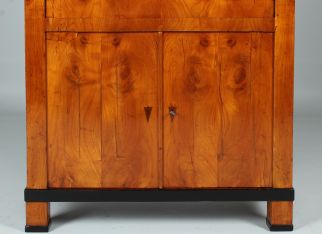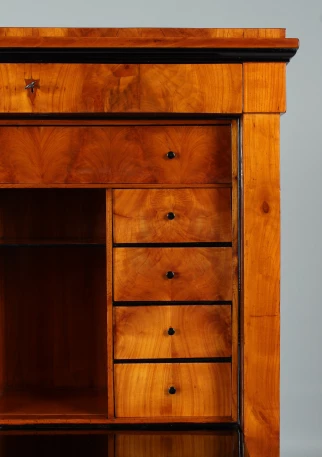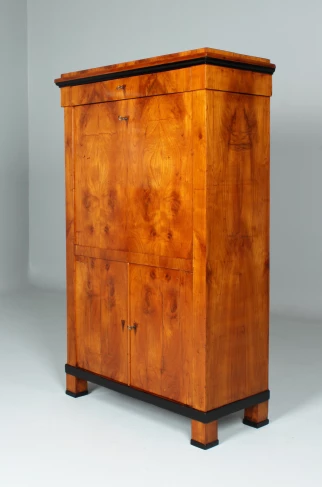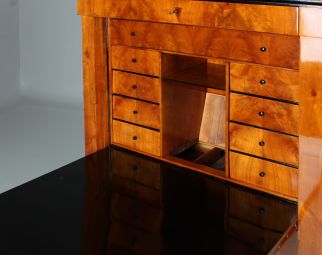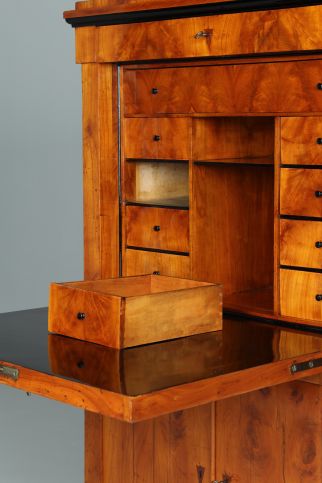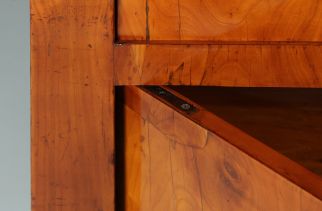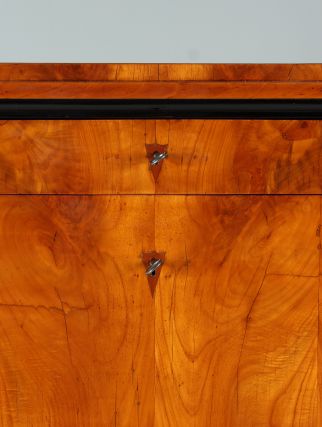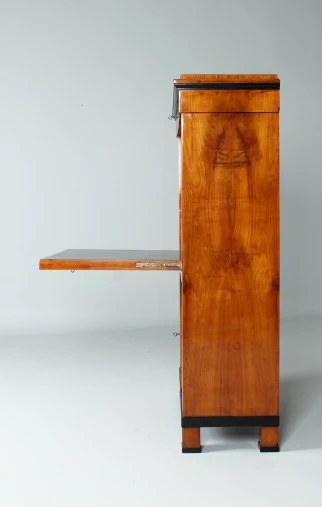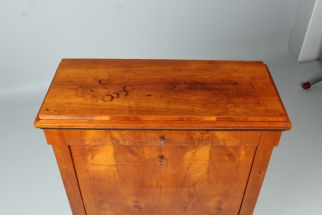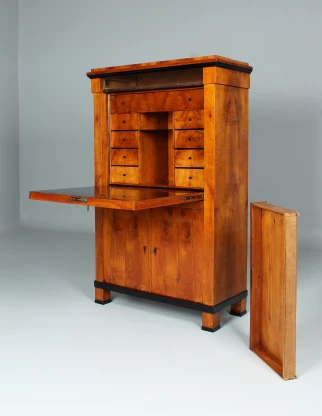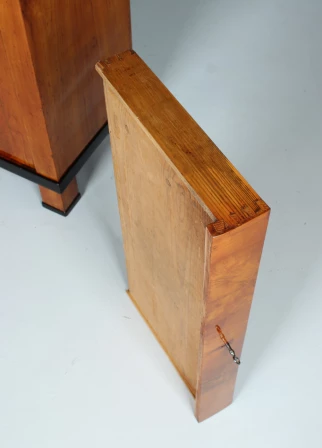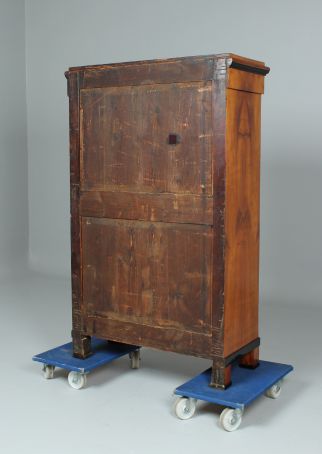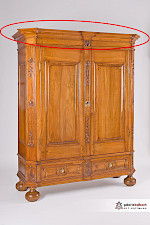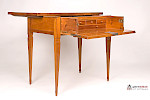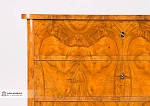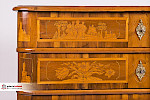Antique cherry wood secretary
Southern Germany
Cherry tree
Biedermeier around 1820
Dimensions: H x W x D: 149 x 94 x 42 cm
Description:
A piece of writing furniture standing on solid block feet with a decidedly small size. The width of 94 cm is measured at the widest point of the cornice, the width of the corpus is approx. 89 cm.
Cherry veneer on softwood. Great veneer pattern.
Very strictly straight-lined front with two doors at the bottom, the writing flap above and a wide drawer at the top.
Inside we see two open compartments with secret drawers below the bottom. On the left and right, there are four drawers each, as well as a wider drawer at the top.
The interior also has a selectively beautiful grain pattern.
Interesting facts:
The "secretary" type of furniture, as you see it here, enjoyed great popularity in the Biedermeier period. Even in the Baroque and Classicist periods, it was predominantly roller and slanted-flap secretaries that were built. The classical form of the standing secretary, also called a writing cabinet, did not emerge until the late 18th century.
Condition:
Freshly restored and shellac polished condition. Great patina preservation. Absolutely authentic. The drawers run smoothly, the locks work.
Price: This secretary is already sold. I offer similar models for 4500,-€ to 5500,-€.
Comparable objects can be found in the specialist literature:
Rainer Haaff - Biedermeier Furniture p. 201
Article found under: Secretaries
Also interesting

Antique secretary with trick lock
Sweden
Birch, mahogany
Historicism - dated 1857
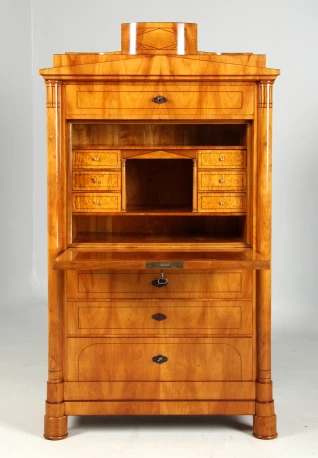
Antique writing cabinet with leather fittings and thread inlays
Austria
Cherry and others
Biedermeier around 1830

Early Biedermeier linen cupboard
Southern Germany
Walnut
Biedermeier circa 1815
